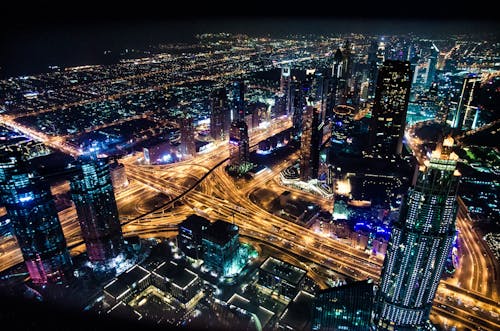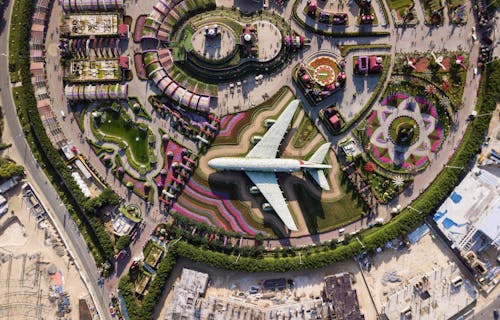
Dubai, a dazzling metropolis rising from the desert, has captivated the world with its blend of futuristic architecture, luxury lifestyle, and rich cultural heritage. Known for its record-breaking skyscrapers, opulent shopping malls, and artificial islands, Dubai offers a myriad of special destinations that attract millions of visitors each year. This article explores the extraordinary landmarks, cultural experiences, and hidden gems that make Dubai a must-visit destination.
The Iconic Skyline: Architectural Marvels
Burj Khalifa: The Pinnacle of Modern Engineering
No visit to Dubai is complete without marveling at the Burj Khalifa, the tallest building in the world. Standing at an astonishing 828 meters, the Burj Khalifa dominates the city’s skyline. Visitors can ascend to the observation decks on the 124th, 125th, and 148th floors to enjoy breathtaking panoramic views of the city and beyond. The At the Top SKY experience on the 148th floor offers a luxurious experience with personalized service and exclusive access to the highest observation deck.
The Burj Khalifa is more than just a tall building; it’s a symbol of Dubai’s ambition and innovation. The structure features an intricate design inspired by Islamic architecture and the Hymenocallis flower. The surrounding area, known as Downtown Dubai, is a bustling hub of activity with attractions like the Dubai Fountain, Dubai Mall, and Souk Al Bahar.
Burj Al Arab: The Epitome of Luxury
Another architectural icon, the Burj Al Arab, is often touted as the world’s only seven-star hotel. Shaped like a billowing sail, this luxurious hotel stands on an artificial island connected to the mainland by a private bridge. The Burj Al Arab offers an opulent experience with its lavish suites, world-class dining, and impeccable service.
Visitors can enjoy a meal at one of its renowned restaurants, such as Al Mahara, which features an underwater aquarium, or Skyview Bar, offering panoramic views of the Arabian Gulf. Even if you don’t stay at the hotel, a visit to its pristine private beach or a reservation for afternoon tea at the Skyview Bar is a memorable experience.
Man-Made Wonders: Engineering Feats and Luxury Islands
Palm Jumeirah: The Island Paradise
Palm Jumeirah, one of the most famous man-made islands, is a testament to Dubai’s innovative spirit. Shaped like a palm tree, this artificial archipelago is home to luxury hotels, upscale residences, and a variety of entertainment options. The Atlantis, The Palm resort, located at the crescent of the island, is a major attraction with its Aquaventure Waterpark, The Lost Chambers Aquarium, and a range of fine dining options.
Visitors can explore Palm Jumeirah by taking a monorail ride that offers stunning views of the island and the Dubai coastline. For a unique perspective, a skydiving experience with Skydive Dubai provides an adrenaline-pumping way to see the island from above.
The World Islands: A Unique Archipelago
The World Islands, another ambitious project, consists of 300 small artificial islands shaped to form a map of the world. Located 4 kilometers off the coast of Dubai, these islands are designed for residential, commercial, and tourist developments. While many of the islands are still under development, some have opened to the public, offering exclusive resorts and private retreats.
The Heart of Europe, a cluster of islands within The World, aims to bring European experiences to Dubai, with themed islands representing destinations like Sweden, Germany, and Switzerland. Visitors can enjoy luxury villas, pristine beaches, and cultural events in a unique setting.
Cultural Experiences: Embracing Heritage and Tradition
Al Fahidi Historical Neighborhood: A Glimpse of the Past
For a taste of Dubai’s rich history, a visit to the Al Fahidi Historical Neighborhood is essential. This well-preserved area, also known as Al Bastakiya, dates back to the early 20th century and offers a stark contrast to the modern cityscape. Narrow winding lanes, traditional wind-tower architecture, and charming courtyards create an authentic atmosphere that transports visitors back in time.
The neighborhood is home to several cultural attractions, including the Dubai Museum, housed in the Al Fahidi Fort, the oldest existing building in Dubai. The museum showcases the history and development of Dubai from a small fishing village to a global metropolis. Other notable sites include the Sheikh Mohammed Centre for Cultural Understanding, where visitors can learn about Emirati culture and enjoy traditional meals.
Dubai Creek: The Heart of the City
Dubai Creek, the natural seawater inlet that divides the city into Deira and Bur Dubai, has been the lifeline of the city for centuries. The creek was historically used for trading and pearl diving, and it remains a bustling hub of activity today. A traditional abra (wooden boat) ride across the creek offers a scenic and affordable way to experience this historic waterway.
On the Deira side, the vibrant Gold Souk and Spice Souk are must-visit destinations. The Gold Souk dazzles with its array of gold jewelry and precious stones, while the Spice Souk offers an aromatic experience with its colorful stalls selling spices, herbs, and traditional remedies. In Bur Dubai, the Al Seef district blends traditional and contemporary elements, with waterfront promenades, restaurants, and shops reflecting the city’s heritage.
Modern Attractions: Entertainment and Leisure
Dubai Mall: A Shopper’s Paradise
The Dubai Mall, located next to the Burj Khalifa, is one of the largest shopping malls in the world and a premier destination for shopping, dining, and entertainment. With over 1,200 retail outlets, the mall offers a wide range of international brands, luxury boutiques, and unique concept stores. Fashion Avenue, the mall’s luxury precinct, features high-end brands such as Chanel, Louis Vuitton, and Gucci.
Beyond shopping, Dubai Mall offers a host of attractions, including the Dubai Aquarium and Underwater Zoo, where visitors can marvel at marine life through a massive viewing panel or walk through a 48-meter tunnel. The VR Park provides cutting-edge virtual reality experiences, while the Dubai Ice Rink offers a fun escape from the desert heat. The mall also features an impressive selection of dining options, from casual eateries to gourmet restaurants.
Global Village: A Cultural Extravaganza
Global Village, an annual cultural and entertainment festival, showcases the diversity and richness of cultures from around the world. Held from October to April, this sprawling venue features pavilions representing different countries, each offering unique products, crafts, and culinary delights. Visitors can explore the vibrant markets, enjoy live performances, and indulge in a variety of international cuisines.
The entertainment lineup at Global Village includes concerts, cultural shows, and stunt performances, ensuring there’s something for everyone. The Carnaval area features thrilling rides and games, making it a fun destination for families. Global Village provides a unique opportunity to experience the world in one place, celebrating the diversity and unity of global cultures.
Hidden Gems: Off the Beaten Path
Al Qudra Lakes: A Desert Oasis
Al Qudra Lakes, located in the Al Marmoom Desert Conservation Reserve, offer a serene escape from the city’s hustle and bustle. This man-made desert oasis is home to a variety of wildlife, including flamingos, swans, and other bird species. The picturesque lakes provide a peaceful setting for picnics, cycling, and nature walks.
Cycling enthusiasts can explore the Al Qudra Cycle Track, a 86-kilometer-long track that winds through the desert landscape, offering stunning views and a chance to spot wildlife. The nearby Last Exit Al Qudra, a food truck park, provides a variety of dining options for visitors to enjoy after a day of exploration.
Hatta: A Mountain Retreat
For a change of scenery, a trip to Hatta offers a refreshing mountain retreat. Located about 130 kilometers southeast of Dubai, Hatta is known for its rugged Hajar Mountains, scenic wadis, and traditional heritage. The Hatta Dam is a popular spot for kayaking and paddleboarding, offering turquoise waters set against a backdrop of rocky peaks.
Hatta Heritage Village provides a glimpse into the region’s past, with restored traditional houses, watchtowers, and mosques. Visitors can explore the village to learn about the local culture and history. The Hatta Wadi Hub offers a range of outdoor activities, including hiking, mountain biking, and zip-lining, making it an ideal destination for adventure enthusiasts.
Culinary Delights: A Gastronomic Journey
Fine Dining: Culinary Excellence
Dubai’s culinary scene is as diverse as its population, offering a wide range of dining experiences from around the world. The city boasts numerous Michelin-starred and celebrity chef restaurants, providing gourmet dining in luxurious settings. At.mosphere, located on the 122nd floor of the Burj Khalifa, offers exquisite cuisine with panoramic views of the city.
Nobu, at Atlantis The Palm, combines traditional Japanese dishes with Peruvian influences, while Zuma, in the heart of the city, serves contemporary Japanese cuisine in a chic setting. La Petite Maison, known for its French Mediterranean dishes, offers a sophisticated dining experience in Dubai International Financial Centre (DIFC).
Street Food: A Taste of Tradition
While Dubai is renowned for its fine dining, its street food scene offers equally delightful experiences. Al Dhiyafah Road, also known as 2nd of December Street, is a popular spot for affordable and delicious street food. Visitors can enjoy shawarmas, falafels, and kebabs from local vendors, offering a taste of Middle Eastern cuisine.
The Dubai Food Festival, held annually, celebrates the city’s diverse culinary offerings with events, food trucks, and pop-up restaurants. The festival provides an opportunity to sample dishes from various cultures and discover hidden culinary gems.

Conclusion: A City of Endless Possibilities
Dubai’s allure lies in its ability to seamlessly blend the old with the new, offering visitors a unique experience that combines tradition, luxury,














